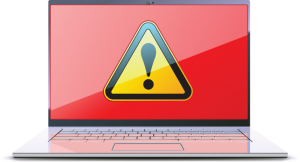
All computers inevitably slow down at some point. The more we use them to download programs, install extensions, and fill up the hard drive with files, movies, and photographs, the slower they get.
Fortunately, keeping your computer running at a rapid pace is relatively straightforward, providing you develop some basic electronic housekeeping habits.
Here are the top five reasons computers slow down and how you can fix them.
Your hard drive is failing
Hard drives fail eventually, so make sure you backup your files on a regular basis. Some users claim that solid state drives (SSDs) are more reliable than hard drives because they don’t incorporate moving parts. However, that’s nothing more than a myth and the data stored on them can still be corrupted. [Read more…] about Five Common Causes For Business Computer Slowdowns And How To Fix Them





 Like other viruses and malware, malvertisements take advantage of security vulnerabilities on users’ computers and mobile devices. These may be anywhere from the operating system, to web browsers and other applications, to add-ons and extensions like Java, JavaScript, and Flash.
Like other viruses and malware, malvertisements take advantage of security vulnerabilities on users’ computers and mobile devices. These may be anywhere from the operating system, to web browsers and other applications, to add-ons and extensions like Java, JavaScript, and Flash. Chances are, you have an antivirus program installed on your personal computer. You may not, however, have the same sort of protection for your smartphone.
Chances are, you have an antivirus program installed on your personal computer. You may not, however, have the same sort of protection for your smartphone. Before purchasing any security device, it’s best to consult with a security professional. Have penetration tests performed and a vulnerability assessment report generated.
Before purchasing any security device, it’s best to consult with a security professional. Have penetration tests performed and a vulnerability assessment report generated.